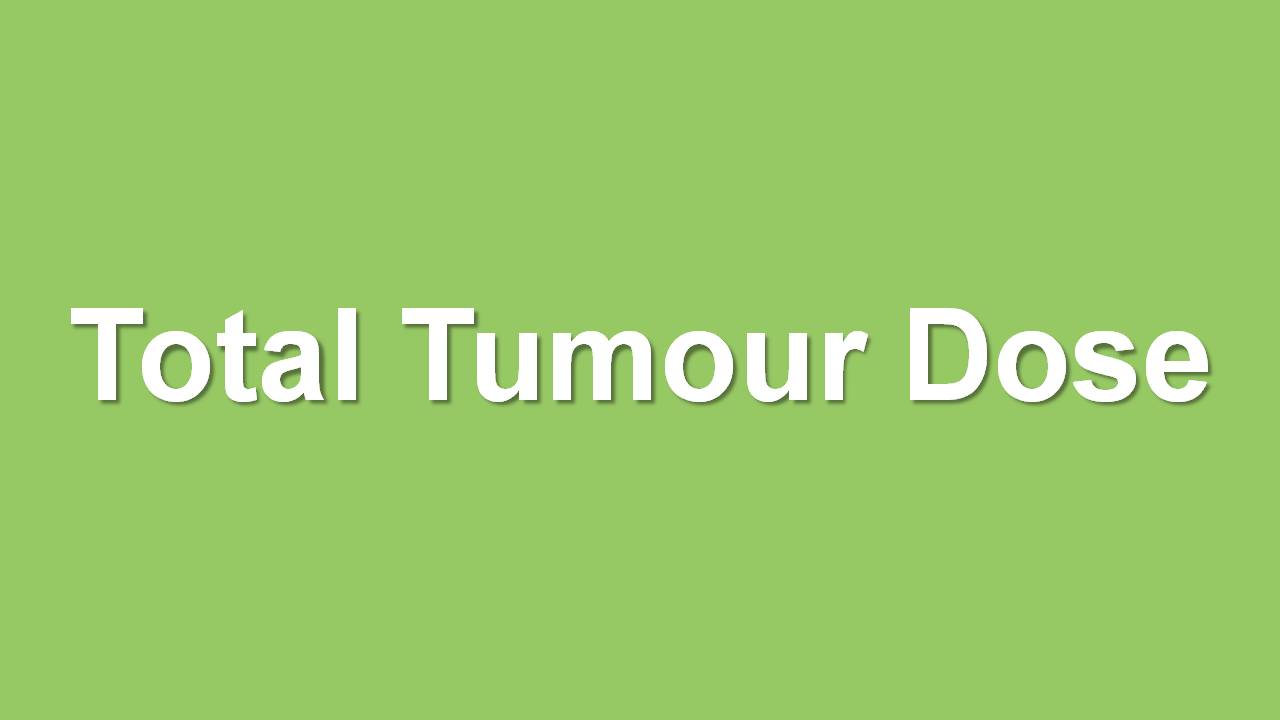Total
Tumour Dose
Home > Treatment Planning > Prescription & Dose Calculation > Treatment Prescription > Total Tumor Dose
Can we please get your advice on this one question?
The total tumour dose for each and every cancer will vary sometimes it may be same also it all depends on the site of occurrence. Treatment plans for all disease stages should be discussed at a multidisciplinary tumour conference involving ENT surgeons, radiation oncologists, and medical oncologists
Selected patients with advanced or metastatic disease may receive surgical resection of their primary tumours, depending on their response to first-line therapy Common sites which have the high rate of incidence takes place are,
1. Head & Neck Cancers
2. Thorax (Oesophagus, mediastinum and lung cancer)
3. Breast cancer
4. Abdomen
5. Brain tumours
6. Cancer of genital areas
Head & Neck Cancers:
Radiation therapy for early or localized disease (oral cavity, pharyngeal, and laryngeal cancers). The radiation dose depends on tumour size; however, for early stage disease, doses of 66-74 Gy (2.0 Gy/fraction; daily Monday-Friday in 7wk) may be used with adequate results
Patients with early or localized disease may be treated with definitive radiation therapy to the nasopharynx alone. Radiation doses of 66-70 Gy (2.0 Gy/fraction; daily Monday-Friday in 7wk). Radiation doses during concurrent chemoradiation are 70 Gy (2.0 Gy/fraction)
Thorax (Oesophagus, mediastinum and lung cancer):
Oesophagus:
For treatment with curative intent, a dose of 50 - 60 Gy (2 Gy per fraction) by external beam radiotherapy is followed by 1 or 2 brachytherapy applications with 5 to 6 Gy (HDR). The brachytherapy is delivered using a large diameter applicator (at least 10 mm) and the reference dose is specified at 5 mm tissue depth
Lung cancers:
Conventional radiotherapy of 60 – 66 Gy 2Gy per fraction is used routinely. This is usually combined with concurrent chemotherapy or adjuvant chemotherapy.
Breast cancer:
For whole breast fields the dose is within a narrow range, usually about 45-50 Gy +/- a boost. Differences in stage, grade and tumor location are more likely to affect whether and which nodal fields (e.g. supraclavicular, axillary, internal mammary) are treated.
Brain tumours:
Most of brain tumours the standard dosage protocol is 60 - 70 Gy in 30# - 35#, 2Gy per fraction.
Brain Metastasis:
The Radiation Therapy Oncology Group (RTOG) performed randomized studies that showed a course of 10 treatments over two weeks to give a total dose of 30 Gray
Cancer of genital areas:
Ca. Cervix, uterus, etc.
The standard protocol for the cancer of female genital areas are 50 Gy in 25# followed by the boost given through brachytherapy of 3# of 18 – 21Gy.
Questions:
1. What is the standard protocol for cancer of cervix?
a) 50 Gy in 25# and brachytherapy of 3# of 18 – 21Gy.
b) brachytherapy of 3# of 18 – 21Gy.
c) 50 Gy in 25#
d) All
Answer:
1. a) 50 Gy in 25# and brachytherapy of 3# of 18 – 21Gy.
References:
1. http://emedicine.medscape.com
2. http://www.estro-education.org
4. http://community.breastcancer.org
Home > Treatment Planning > Prescription & Dose Calculation > Treatment Prescription > Total Tumor Dose
FREE Infographic What successful people believe. What successful people do
Dictionary of Cancer Terms
Need help understanding a word? Here is an electronic resource that gives meaning to Cancer terms and their usage.

StrengthsFinder 2.0
